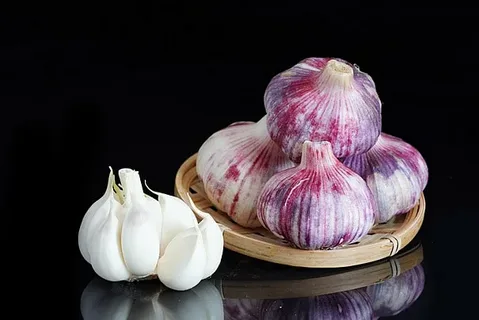Garlic has been a kitchen-and-garden mainstay since the beginning of time: Purple garlic stands out among hundreds of varieties not only because of its beautiful color, but also because it tastes, is healthier, and more resilient than other varieties. Whether you are an ardent cook, you have a backyard garden, or are just curious about this colorful cousin of common garlic, by better understanding purple garlic, you can create new levels of taste and usefulness in your kitchen.
What Is Purple Garlic?
Purple garlic, which is sometimes also referred to as purple stripe garlic or hardneck garlic, describes several heirlooms characterized by yard-long streaks of purple in the outer skin. These markings are natural and can be seen best on, e.g., Chesnok Red, Purple Glazer, and Russian Red. Unlike the pale white heads usually found in supermarkets, purple garlic has both visual appeal and a strong, robust flavor. Learn more.
There’s this common myth that the garlic is genetically modified or lacks its fullest advantage because it is purple—couldn’t be further from the truth. Pigments, called anthocyanins, make purple garlic contain more antioxidants than its white counterparts.
Taste and Culinary Uses
Everybody should check out purple garlic as one of the best non-vegetarian ingredients with a strong flavor. Purple garlic tends to be compared to common white garlic:
- Spicier when raw
- Better roasted and more fragrant, and sweeter
- Less bitter when cooked
It is great for any dish where garlic is a leading ingredient—garlic confit, aioli, or a basic pasta aglio olio, for example. Roasting purple garlic makes the bite less sharp, and releases the hint of natural sugars, giving a rich, almost buttery character which flows on bread nicely or broths fruitfully. Since many purple hued garlics are hardneck varieties, they’re easier to peel, a benefit for home cooks who dread sticky garlic skins.
Health Benefits
Perhaps like any other garlic, purple garlic too is endowed with good health compounds. It’s especially high in allicin, a sulfur compound triggered when garlic is chopped or crushed. Allicin has been linked to:
- Reduced blood pressure
- Lower cholesterol
- Antiviral and antibacterial effects
- Enhanced immune function
The same antioxidants present in blueberries and red cabbage are found in purple garlic’s anthocyanins, which are extra health benefits that combat inflammation and oxidative stress.
Growing Purple Garlic
Purple garlic is a good crop for those with even a little bit of garden space. The majority of the purple garlic cultivars are hardneck and, thus, do well in colder climates and put out edible scape which is the flowering stalk. Scapes are edible too and have the tastier garlic flavor that is perfect for stir-fries or pesto.
Here’s how to grow it:
1. Planting:
After removing cloves from the bulb and planting them in the fall, upper pointed end up, at a depth of 2 inches and 6 inches apart.
2. Soil and Sunlight:
Garlic thrives on well-drained soil and full sun.
3. Watering:
Moisture of the soil should be maintained, but not soggy. It is possible for too much water to also cause rot.
4. Harvesting:
Once the leaves have turned yellow in early to mid-summer, you should plan to harvest. Withdraw the bulbs gently, let them dry out in a dry, shaded place, and store them for future use.
Purple garlic is a beautiful addition to farmers’ markets and home kitchens as well. It stores nicely for several months if cured properly.
Conclusion:
Purple garlic is not only a cute face. It offers an outstanding taste, nutritional value, and aesthetic pleasure; and thus it is the favorite of gardeners, chefs, and health buffs. Whether thrown into sautes whole or minced into sauces, and even when planted in your own back yard, purple garlic gives a little more of everything – taste, color, and charm.





